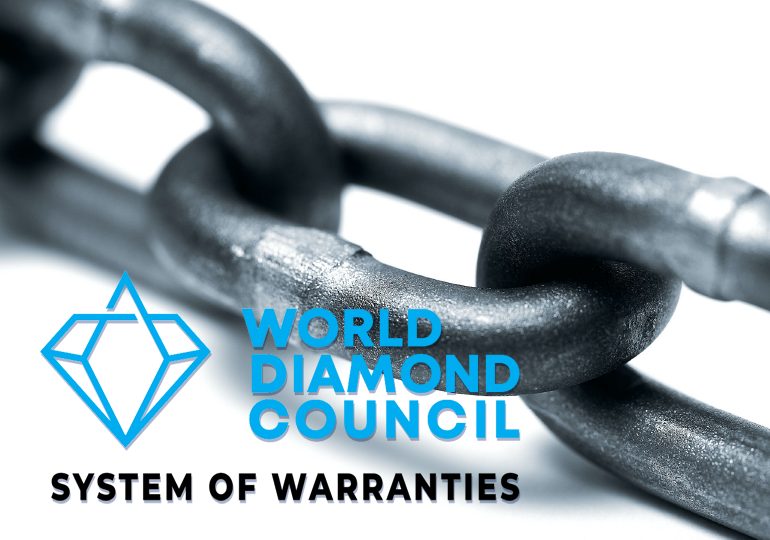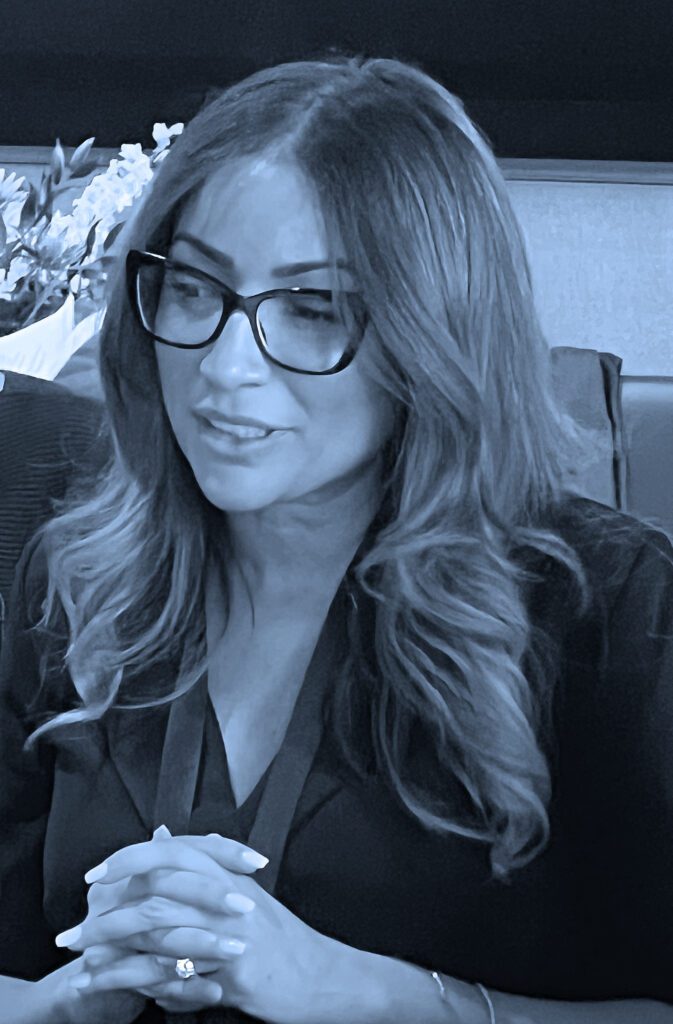THE WDC AS A DIAMOND INDUSTRY REPRESENTATIVE,
WITHIN THE KIMBERLEY PROCESS AND BEYOND IT


Photo by Kane Reinholsten on Unsplash.





By Steven Benson
Since its creation at the 29th World Diamond Congress in Antwerp, Belgium, in July 2000, the World Diamond Council (WDC) has been inexorably linked to the international forum that also was established that same year, the Kimberley Process.
And there is a natural association – historically, with both being formed in reaction to the conflict diamond crisis, which was raging in Africa at the time, and functionally, with the WDC becoming the industry’s official representative within the KP coalition, alongside representatives of the governments of KP Participants, and members of civil society, with whom the WDC shares Observer status.
But while it may not have been immediately apparent during those tumultuous days in 2000, the structure of the WDC enabled the new organization to take a broader perspective than that required by its role within the KP, ensuring its relevance long after the civil wars that prompted the conflict diamond crisis eventually drew to a close.
This ability was the result of the WDC being the only diamond-industry association in which both the major corporate players and a cross section of national and international associations are present, meaning that from a grass-roots standpoint it is associated – directly and indirectly – with more industry members than any other diamond organization. Its members also operate along the full length of the distribution chain, from the mine to the retail jeweler.
When it was created 23 years ago, there was tacit agreement within the industry that, in order to confront a challenge that threatened the integrity of both the natural diamond and the community that handles it, a single organization was required that could speak and act on its behalf – to the greatest degree possible with a unified voice. Its members did not represent a single business entity – indeed many were and still remain competitors. But there was a mutual understanding that where industry integrity is concerned there is common purpose, for an erosion of ethical reputation would be devastating to all concerned.
The WDC’s dual purpose
Article 1 of the WDC Bylaws stresses the dual purpose of the association, noting that it is, on the hand to, “to represent the natural diamond industry in the development and implementation of regulatory and voluntary systems to control the trade in diamonds embargoed by the United Nations or covered by the Kimberley Process Certification Scheme,” but also to advance “the capacity of natural diamonds and the natural diamond industry to promote and facilitate positive economic and social development in the countries where they are located.”
Thus, while reiterating WDC’s commitment to the Kimberley Process, the WDC Bylaws also indicate that the diamond industry association is not bound by the limitations that the KP currently places upon itself – with the most notable instance being the KP’s existing restriction of the term “conflict diamonds” so that it refers only to rough diamonds being used to finance civil wars against legitimately recognized governments.
In Article 1 of its Bylaws, the WDC notes that it “is informed by and guided by conventions, principles and decisions by the United Nations or covered by the Kimberley Process Certification Scheme,” but that it also is committed to “respect for human rights, fair labor practices, protection of the environment, adherence to anti-money laundering and anti-terrorist finance regulations and anti-corruption principles.”
The broader focus of WDC mission is reflected in the System of Warranties, the self-regulatory system first introduced by the World Diamond Council to coincide with the launch of the Kimberley Process Certification Scheme in 2003. It was originally designed to reinforce the effectiveness of the KPCS by ensuring that KP certificates could be associated with both a polished diamond and a rough diamond, each time a stone changes hands. But it was upgraded in a revised form that was launched in 2021, adding elements that went beyond the current scope of the Kimberley Process.
The revised warranty statement of the upgraded System of Warranties included a commitment that the seller of a diamond adheres to the updated WDC SoW Guidelines, which expressly support universally accepted principles of human and labor rights, anti-corruption and anti-money laundering (AML). These reference the UN Guiding Principles on Business and Human Rights, the ILO Declaration on Fundamental Principles and Rights at Work, the UN Convention Against Corruption, and national AML guidelines that comply with the FATF’s 40 Recommendations on Money Laundering for Dealers in Precious Metals and Stones.
Speaking at the KP Plenary Botswana in November 2022, the then-WDC President Edward Asscher explained the World Diamond Council and the industry’s proactive and sometimes independent approach. “First, [we are] not sitting idly by, waiting for change,” he said. “Propriety systems have been developed by mining companies, and protocols have been developed and are applied by certain large jewelry retail chains and brands. This is in addition to WDC’s revised System of Warranties as well as the auditing of the Responsible Jewellery Council. Together these initiatives are necessary for the whole industry due to the narrow scope of the KP. Furthermore, the industry is diligently working on future systems for responsible sourcing, with cutting-edge technologies being able to verify from where rough diamonds are sourced.”
Restructured to ensure representation
In 2014, some 14 years after it was originally established, the WDC was restructured, with the express purpose of guaranteeing that that the organization would be representative of the diamond industry in total. Before that date, the WDC President was appointed. Afterwards, he or she would elected by a secret ballot by the WDC Board of Directors, who themselves are elected by the members.
To ensure that its decision-making system would include all sectors of the industry, the Board Directors was arranged so that five categories of members were always included, namely (1) organizations engaged in the business of extraction (or mining) of diamonds, (2) organizations engaged in the retail sale of diamonds or diamond jewelry, (3) organizations engaged in wholesale trading of diamonds; (4) organizations engaged in the manufacturing, or cutting and polishing of diamonds, and (5) and what were termed “other diamond industry stakeholders,” including individuals, private organizations and service providers.
Furthermore, as part of the restructuring, permanent seats on the Board of Directors were assigned to the industry’s three primary representative international organizations, the World Federation of Diamond Bourses (WFDB), the International Diamond Manufacturing Association (IDMA) and the World Jewellery Confederation (CIBJO). Each of those bodies counts amongst their membership national associations that in turn serve many thousands of individual companies and people involved in industry worldwide.
Through its new structure, the WDC aimed to serve and act on behalf of the international diamond industry in its entirety.
“The WDC is not an exclusive club, but very much a grass-roots organization,” explained the organization’s current President, Feriel Zerouki, in a recent interview with India’s Solitaire International. “Our authority to speak on behalf of the industry is vested in the fact the key associations, who collectively represent literally hundreds of thousands of members, are represented in both our ranks and leadership. They are joined by leading commercial organizations, like De Beers, Chow Tai Fook, Tiffany & Co. and Signet. Our ability to act decisively requires that we do so together – applying standards of behavior and implementing programs – like the revised System of Warranties – that collectively enhance the integrity of the supply chain.”


‘The WDC is not an exclusive club, but very much a grass-roots organization. Our authority to speak on behalf of the industry is vested in the fact the key associations, who collectively represent literally hundreds of thousands of members, are represented in both our ranks and leadership.’
Feriel Zerouki
WDC President
The boundaries of its authority
With its mandate to represent the industry vested in its structure, membership and the historic role it has played within the Kimberley Process, the World Diamond Council still remains clear-eyed about the boundaries of its authority.
Within the context of the Kimberley Process it is an Observer, which means that, while it participates in all forums and working groups, it does not have voting power, which is a exclusively held by government Participants.
Furthermore, as an industry representative the WDC has the ability to gather together interested parties, to discuss and debate issues, to interact with governments and civil society, and to formulate, recommend and advocate ideas and strategy. But it does not have the exclusive authority to set policy, nor to enforce it. That power is vested in national governments.
But, while its ultimate authority is constrained, the WDC remains the most representative body within the diamond industry, and the organization best suited and equipped to act on its behalf in times of crisis and uncertainty. This ability has been demonstrated over the years within the Kimberley Process, where WDC has earned the respect and trust of both national governments and civil society, as well as in other international forums.


